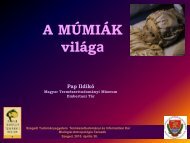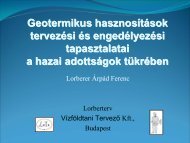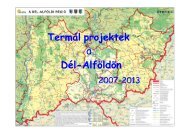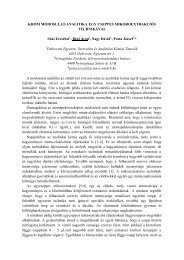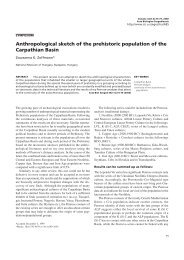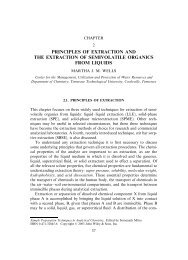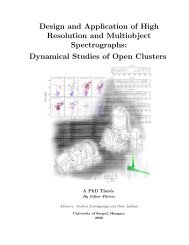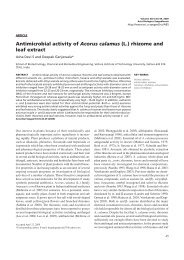Analysis of paternal genetic relationship of ancient Hungarian ...
Analysis of paternal genetic relationship of ancient Hungarian ...
Analysis of paternal genetic relationship of ancient Hungarian ...
Create successful ePaper yourself
Turn your PDF publications into a flip-book with our unique Google optimized e-Paper software.
INTRODUCTION<br />
The main biological importance <strong>of</strong> Y chromosome is its role in sex<br />
determination and male fertility. The singular characteristics <strong>of</strong> the Y chromosome,<br />
which include haploid state, male specificity, <strong>paternal</strong> inheritance and absence <strong>of</strong><br />
recombination through most <strong>of</strong> its length (95%), make this chromosome a powerful tool<br />
for tracing and comparing <strong>paternal</strong> lineages and studying <strong>genetic</strong> diversity <strong>of</strong> human<br />
populations.<br />
Y chromosome variation consists <strong>of</strong> large amount <strong>of</strong> different types <strong>of</strong><br />
polymorphisms, they may roughly be divided into two large groups: bi-allelic markers<br />
and polymorphisms <strong>of</strong> tandem repeats or multi-allelic markers. Biallelic markers<br />
include point mutations (Single Nucleotide Polymorphisms - SNP markers), insertions<br />
and deletions. These binary polymorphisms define the Y-chromosomal haplogroups,<br />
which show geographical clustering (Jobling & Tyler-Smith 2003). Haplogroup<br />
assignment <strong>of</strong> a sample is based on derived states <strong>of</strong> biallelic markers.<br />
One specific Y-chromosomal base substitution, the T→C point mutation in the<br />
RBF5 locus, called the Tat C allele, is <strong>of</strong> interest in the Finno-Ugric context (Zerjal et<br />
al. 1997). It defines the Y chromosome haplogroup N3, which is present in northern and<br />
eastern Europe, but is virtually absent in the west and south. It is also frequent in<br />
northern Asia (Zerjal et al. 1997, Rootsi et al. 2000, Semino et al. 2000a, Tambets et al.<br />
2004). The C allele <strong>of</strong> the Tat polymorphism is widespread in all Uralic-speaking<br />
populations studied so far, including Voguls and Ostyaks who are the two closest<br />
linguistic cognates <strong>of</strong> <strong>Hungarian</strong>s; but it is hardly found in modern <strong>Hungarian</strong><br />
populations (e.g. Rootsi et al. 2000, Tambets et al. 2004), even ethnic groups <strong>of</strong><br />
<strong>Hungarian</strong>s such as Csángós (Lahermo et al. 1999) or Palóc (Semino et al. 2000b).<br />
Several explanations have been suggested for the striking absence <strong>of</strong> Tat C in the<br />
linguistically Uralic modern <strong>Hungarian</strong> population (Rootsi et al. 2000, Semino et al.<br />
2000b). One is that Voguls and Ostyaks, and many other Siberian populations obtained<br />
this Y-chromosomal lineage only relatively recently, after the ancestors <strong>of</strong> the Magyars<br />
had left the Siberian forests for the great Eurasian steppe. Another is that <strong>Hungarian</strong>s<br />
and Siberian Ugric-speaking populations have always been <strong>genetic</strong>ally unrelated despite<br />
their linguistic affinities. A third possibility is that the ancestral Magyars did have the<br />
Tat C allele, but lost it through <strong>genetic</strong> drift during their migration to Hungary, or after<br />
their settlement there.





